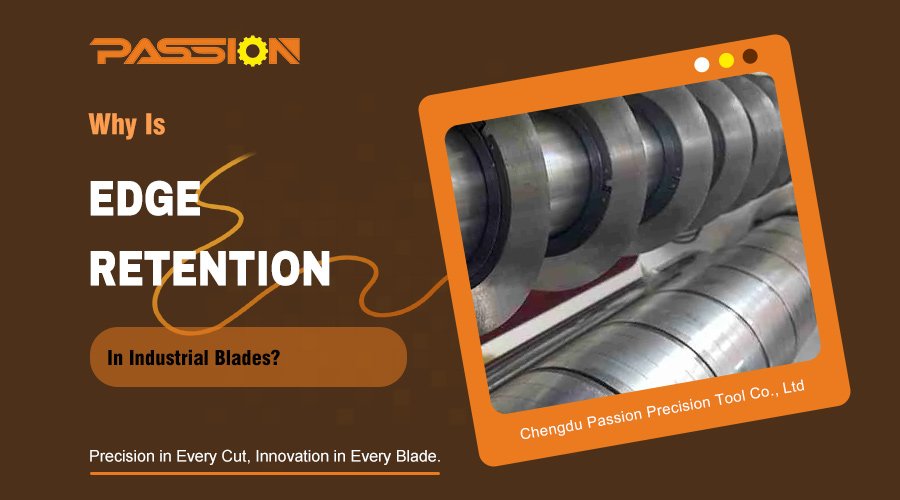In the industrial manufacturing sector, tungsten carbide blades have become indispensable core equipment across numerous industries—including machining, metal cutting, woodworking, papermaking, rubber and plastics, and tobacco—due to their exceptional wear resistance, high hardness, and superior cutting performance. However, even the sharpest blades will eventually lose their original cutting capabilities after prolonged use and ultimately be replaced.
In the past, people often regarded these discarded blades as “useless items” and disposed of them directly. However, with the growing global scarcity of resources and heightened environmental awareness, the value of waste tungsten carbide blades is gradually being recognized anew. In fact, they are not waste but carriers of rare resources. Through scientific recycling and reuse, these discarded blades can re-enter the industrial chain, generating economic benefits for enterprises while contributing to society’s sustainable development.
Next, we will explore the following aspects: Why do discarded blades retain “value”? The material composition and rarity of tungsten carbide blades, the recycling process for tungsten carbide blades, and the economic and environmental significance of recycling.
The Value And Material Composition Of Discarded Blades
The fundamental reason why discarded tungsten carbide blades retain value lies in their unique material composition and scarcity. Although the cutting edge wears out during use, the core material itself does not lose its properties. In other words, the scrapping of the blade signifies only the loss of its functional form, not the disappearance of its material value.
1. The Central Role Of Tungsten Carbide (Wc)
The primary component of tungsten carbide blades is tungsten carbide powder, whose hardness is second only to diamond, boasting a Mohs hardness of 9 and exceptional wear resistance and compressive strength. Waste blades typically contain 70% to 90% tungsten carbide, making it the primary target in recycling processes. Through re-extraction and re-milling, tungsten carbide can be reused in blade production, wear-resistant component manufacturing, and even high-temperature spray coatings.
2. Cobalt (Co) As a Binder
Tungsten carbide particles are held together by a binder, with cobalt being the most critical component. Cobalt’s scarcity and strategic importance surpass those of tungsten. It serves not only as a core element in the cutting blade industry but also as an indispensable raw material for new energy batteries and aerospace materials. Global cobalt deposits are concentrated in a limited number of regions, exhibiting highly uneven geographic distribution and posing significant supply chain risks. Consequently, recovering cobalt from discarded cutting blades holds immense value.
3. Other Alloying Elements
Certain high-performance cutting tools incorporate rare elements like titanium (Ti), tantalum (Ta), and niobium (Nb) to enhance toughness, heat resistance, and impact resistance. These elements are also classified as strategic resources with high market prices, directly determining the recycling potential of spent cutting tools.
4. Scarcity And Non-Renewability
Rare metals like tungsten and cobalt are extremely scarce in the Earth’s crust, challenging to mine, and classified as non-renewable resources. Tungsten, in particular, is designated as a strategic reserve metal by many nations and is extensively used in defense, aerospace, energy, and high-end manufacturing. As global industrialization accelerates, the consumption rate of mineral resources far exceeds natural regeneration rates, making recycling an essential solution to alleviate resource constraints.
5. Industrial Reuse Value
After scientific recycling and processing, discarded cutting blades yield high-purity raw materials such as tungsten powder, tungsten carbide powder, and cobalt powder, whose properties are virtually indistinguishable from virgin materials. These materials can be used not only to produce new cutting blades but also to enter high-end industrial fields such as powder metallurgy, electronic electrodes, high-temperature alloys, and hard coating applications. This “closed-loop recycling” significantly reduces dependence on primary ore while lowering production costs for enterprises.
Recycling Process For Tungsten Carbide Cutting Blades
The recycling of tungsten carbide cutting blades is not merely simple metal scrap recovery, but rather a sophisticated process involving classification, crushing, chemical treatment, and smelting regeneration.
1. Collection And Sorting
Discarded blades originate from diverse sources, including machining enterprises, tool distributors, and equipment maintenance facilities. Prior to recycling, they must be sorted based on structural composition and material content:
Solid tungsten carbide blades: Milling cutter heads—high material purity, significant recycling value.
Welded blades: Requires removal of the welded steel body before recycling.
Coated blades: Surface coatings must be treated first to ensure purity of extracted tungsten carbide.
2. Mechanical Crushing And Pretreatment
The extreme hardness of blades requires specialized equipment for crushing into small pieces or granules. For brazed blades, high-temperature debinding or chemical separation is necessary to completely separate the carbide from the steel substrate.
3. Chemical Recovery Process
The most common method is chemical leaching, where acids or alkalis dissolve cobalt or tungsten. This is followed by precipitation, filtration, and reduction to obtain high-purity metal powders:
Acid leaching: Dissolves binders like cobalt.
Precipitation reduction: Controls conditions to precipitate tungstate salts, then reduces them to tungsten powder with hydrogen.
Carburizing: Combining tungsten powder with carbon to regenerate tungsten carbide powder.
4. Metallurgical Recovery Process
Another method involves high-temperature metallurgical processes like carbon thermal reduction. These techniques directly produce tungsten carbide or alloys but consume significant energy, making them suitable for specialized waste materials difficult to recover chemically.
5. Remanufacturing And Recycling
The resulting tungsten powder, tungsten carbide powder, and cobalt powder can be reintroduced into tool manufacturing to produce cemented carbide blades with performance comparable to new materials. This not only achieves material recycling but also ensures sustainable development across the industrial chain.
Global Recycling Status And Development Trends
Currently, global attention on recycling cemented carbide cutting tools is steadily increasing, revealing distinct regional variations:
Europe and America: Established mature recycling systems early on, with many tool manufacturers collaborating with recycling enterprises to form closed-loop models. For instance, some European companies can already recycle and reuse over 70% of waste cutting tools.
Japan and South Korea: Highly dependent on imported resources, these countries exhibit high recycling rates. Governments have even implemented policies encouraging corporate recycling of waste blades to safeguard industrial chain security.
China: As one of the world’s largest consumers of cemented carbide, China generates massive volumes of waste blades, yet its recycling system remains underdeveloped. Recent national initiatives promoting a circular economy are accelerating industry growth.
Future Trends: Recycling processes are expected to become greener (reducing acid and alkali usage), smarter (automated sorting and intelligent crushing), and more scaled (large centralized recycling bases). Within the context of global supply chains, recycling will emerge as a new competitive advantage for the cemented carbide industry.
The Economic And Environmental Significance Of Recycling
1. Economic Benefits
- Cost Reduction: Recycling metals is significantly cheaper than direct ore mining.
- Stable Supply: Reduces dependence on international mineral markets and mitigates price volatility.
- Industrial Upgrading: Drives enterprises to form closed-loop industrial chains involving waste recycling, remanufacturing, and reapplication.
2. Environmental Benefits
- Minimizing Mining Damage: Tungsten and cobalt mining devastates land and water resources; recycling substantially reduces such destruction.
- Reducing Waste Pollution: Long-term accumulation of waste cutting tools poses environmental risks; recycling prevents heavy metal leaching contamination.
- Lowering Energy Consumption and Carbon Emissions: Recycling requires 30%-40% less energy than primary ore smelting, significantly reducing carbon emissions.
3. Social And Strategic Significance
- Resource Security Assurance: In an era of intensifying global resource competition, recycling waste cutting tools establishes a “second mine”.
- Advancing the Circular Economy: Aligns with industrial trends toward green manufacturing and sustainable development.
- Enhancing Corporate Responsibility Image: Companies actively participating in recycling gain greater recognition from customers and markets.
How Companies Can Establish A Used Cutting Tool Recycling System?
For cutting tool manufacturers, distributors, and end users, establishing a comprehensive used tool recycling system not only reduces costs but also demonstrates corporate responsibility:
- Establish collection channels: Gather used tools through recycling stations, collection bins, centralized collection points, and other methods.
- Partner with professional recycling companies: Ensure used tools receive proper processing rather than being sold as ordinary scrap metal.
- Implement buyback programs: Manufacturers can repurchase customers’ used blades at a set price and offer discounted new products, creating a circular relationship.
- Digitalize management: Track used blades using barcodes or RFID technology to enhance recycling efficiency.
- Educate employees and customers: Promote awareness of blade value to increase recycling participation.
Such a system not only generates additional revenue for businesses but also becomes a key component of their green brand image.
Discarded tungsten carbide cutting blades are not worthless waste but a high-value secondary resource. They contain substantial amounts of tungsten carbide, cobalt, and other rare elements with immense reuse potential. Through scientific recycling processes, these rare metals can be reintroduced into industrial cycles, delivering significant economic benefits while reducing dependence on natural resources, minimizing environmental damage, and advancing the circular economy.
Amid growing resource constraints and environmental pressures, waste blade recycling has become a vital component of manufacturing’s green transformation. Companies that establish robust recycling systems not only secure raw material supplies and reduce costs but also cultivate a responsible, sustainable corporate image. Looking ahead, as recycling technologies and circular economy principles mature, the recovery and reuse of discarded carbide blades will gain broader global adoption, playing an increasingly pivotal role in advancing green industrial development.
Current Status Of Tungsten Raw Materials
To grasp the importance of recycling waste cemented carbide inserts, one must consider the broader context—the market status of tungsten raw materials. As the core element of cemented carbide, tungsten is a strategic rare metal hailed as the “teeth of industry.” In recent years, tungsten supply has grown increasingly tight, with prices fluctuating dramatically, becoming a key factor affecting the development of the tooling industry and the entire manufacturing sector.
Rapid Tungsten Price Surge
Over the past few years, the global tungsten market has experienced a pronounced price increase cycle. Particularly with the rapid development of new energy vehicles, aerospace, and high-end manufacturing, demand for cemented carbide has significantly risen. Prices for tungsten concentrate and tungsten powder have surged multiple times within short intervals, directly driving up manufacturing costs for cemented carbide cutting tools. Many tooling companies now find raw material costs accounting for over half of their total production expenses, fueling heightened market interest in recycling and reuse.
Manufacturers Confront Shortages And Supply Tensions
The scarcity of tungsten resources manifests not only in pricing but also in supply chain stability. Restricted mining, tightened export policies, and international market uncertainties frequently leave cutting tool producers facing raw material shortages and extended delivery cycles. Small and medium-sized manufacturers, lacking bargaining power in raw material procurement, are particularly vulnerable to tungsten supply disruptions, which can even impact production schedules.
Driving The Establishment Of Recycling Systems
The sustained rise in tungsten raw material prices has directly stimulated the development of the cemented carbide blade recycling industry. For tool manufacturers and end-users, recycling and reusing discarded blades not only alleviates raw material procurement pressure but also helps stabilize production costs to some extent. With the advancement of environmental policies and resource recycling strategies worldwide, recycling used cemented carbide is no longer an “option” but is gradually becoming an inevitable measure for corporate sustainable development.
Future Trend: Recycling As Primary Supplementary Source
Against the backdrop of finite tungsten ore resources and escalating mining costs, the industry widely anticipates that a significant portion of future cemented carbide raw materials will originate from recycled waste products. For enterprises, those who establish comprehensive recycling channels and circular utilization capabilities faster will gain a competitive edge in the fiercely contested market.
The current scarcity and high cost of tungsten raw materials make the recycling of discarded cemented carbide cutting tools not only an environmentally responsible practice but also a critical means to alleviate supply chain pressures and ensure stable corporate development.







